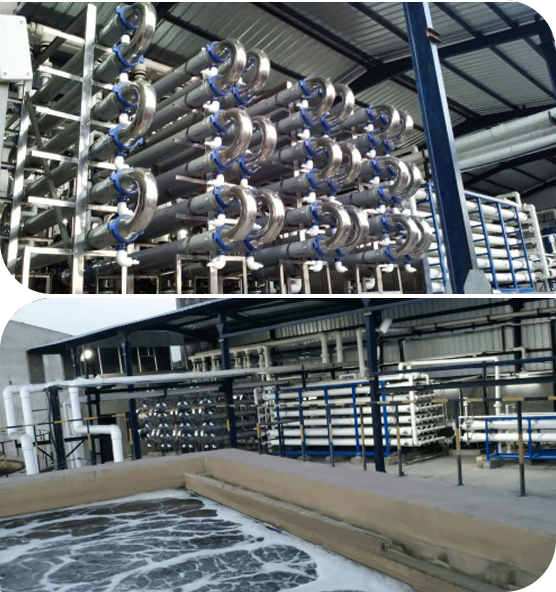
Waterman Engineers Australia is amongst the primary manufacturers of Zero Liquid Discharge system. A ZLD system is actually a remedy method that's utilised to get rid of each of the liquid waste from the process. The target of ZLD drinking water therapy is to reduce wastewater economically and produce potable h2o that is certainly in shape for typical use. Zero discharge method is a complicated treatment method approach that comprises ultrafiltration, reverse osmosis, evaporation and fractional electro deionization. And we are a very well-acknowledged supplier of ZLD devices.
In many Industries, which include electric power, oil & gas, substances, mining and Other individuals, a great deal of wastewater is produced that should be managed. Conventionally, this discharge of wastewater is done by using a plant outfall to some area water overall body like an evaporation pond, or in some cases deep very well injected. These methods bring on numerous environmental problems by the general public in many areas of the whole world, as water can be a scarce resource and its management needs to be monitored. These fears have resulted within the establishment of ZLD processes by quite a few industries to reduce their environmental footprint and improve sustainability. And, Waterman Engineers Australia are ideal ZLD suppliers you can find for this system.
Homes OF ZERO LIQUID DISCHARGE Process
The Attributes of the Zero Liquid Discharge system may vary dependant upon the unique design and technologies employed. Even so, some prevalent Houses of ZLD devices include things like:
H2o Conservation: Considered one of the key aims of ZLD techniques is always to conserve h2o by reducing the discharge of liquid waste in to the atmosphere.
High H2o Purity: ZLD devices are intended to generate higher-quality h2o that is certainly free of charge from impurities and contaminants, which makes them suited to use in lots of industrial procedures.
Versatility: ZLD systems will often be made to accommodate a wide selection of enter liquid streams, which makes them functional and ideal for use in various industries.
Innovative Wastewater Therapy: Zero liquid discharge units use Innovative wastewater treatment techniques to remove impurities and contaminants through the effluent, creating substantial-quality drinking water.
Squander Reduction: ZLD systems aid cut down waste by lowering the quantity of liquid squander that should be disposed of and by generating a concentrated, stable squander material that may be safely and securely disposed of.
Energy Efficiency: ZLD techniques is often Electrical power-intense because of the substantial Electricity requirements of evaporation as well as other wastewater remedy processes. Even so, advancements in know-how are earning Zero liquid discharge systems more energy-efficient and price-helpful.
Waterman Engineers Australia manufactures Zero Liquid Discharge (ZLD) units meant to take out all liquid squander, aiming to create potable drinking water and reduce environmental impact. Their ZLD systems ordinarily involve ultrafiltration, reverse osmosis, evaporation, and fractional electro deionization. Critical technologies used are Slipping Film Brine Concentrators, Compelled Circulation Crystallizer, and Some others, by using a two-stage process of pre-focus and evaporation/crystallization to recover and reuse h2o. These techniques are adaptable to various industries, emphasizing h2o conservation, large h2o purity, waste reduction, and Electrical power effectiveness. Technical requirements are diverse and customizable, looking at variables like h2o supply, move charge, and feed h2o top quality.
The necessity for Zero Liquid Discharge (ZLD) methods arises within the necessity to handle environmental concerns connected with h2o scarcity and pollution. In industries like electricity, oil & fuel, and mining, huge amounts of wastewater are produced. Customarily, this wastewater is discharged into bodies of water, triggering air pollution and depleting clean water assets. ZLD devices purpose to minimize these impacts by treating and recycling wastewater in the commercial system, thus conserving water, decreasing waste, and marketing sustainability.
When it comes to the technological technical specs of the Zero Liquid Discharge (ZLD) procedure, important elements to give attention to incorporate the drinking water source it's going to handle, the technique's circulation fee, the caliber of feed water, the stages of treatment associated, the Restoration fee of drinking water, strategies for concentrate disposal, materials of design, running problems, and program automation and Handle. These elements make sure the process's efficiency, durability, and performance in dealing with and recycling industrial wastewater.
Zero Liquid Discharge (ZLD) plants give Added benefits for example water conservation, squander reduction, and pollution avoidance, contributing to environmental sustainability. They're relevant in industries like electrical power technology, oil and gasoline, chemicals, and mining, wherever they help in taking care of industrial wastewater efficiently, reducing the ecological footprint, and complying with rigorous environmental laws. These units are vital Zld System Manufacturer Zero Liquid Discharge System in areas going through h2o scarcity and for industries aiming to enhance their sustainability and operational performance.
FAQs to get a Zero Liquid Discharge (ZLD) process frequently tackle its operational concepts, Expense-performance, maintenance demands, environmental effects, applicability across different industries, and regulatory compliance. These thoughts assist end users have an understanding of the method's Positive aspects, technological demands, and suitability for their particular wastewater management demands.
one. Zero Liquid Discharge (ZLD) is often a wastewater treatment procedure created to remove all liquid squander.
2. The technique's parts are motivated by the particular industrial course of action, wastewater composition, and regulatory prerequisites.
three. Effluent cure vegetation clear away pollutants from textile effluents to forestall environmental contamination.
four. Rewards incorporate drinking water conservation, pollution reduction, and regulatory compliance.
five. The intention is to attenuate environmental impression by recycling drinking water and lowering waste.
six-nine. Effluent remedy plants are levels in wastewater cure: Principal (physical separation), secondary (Organic cure), and tertiary (State-of-the-art treatment method).
10. Device operations include filtration, sedimentation, Organic remedy, and disinfection.
11. Restricting parameters are elements that affect the procedure's effectiveness, like pH and contaminant focus.
12. Design things to consider incorporate flow level, effluent composition, and sought after high quality of dealt with water.